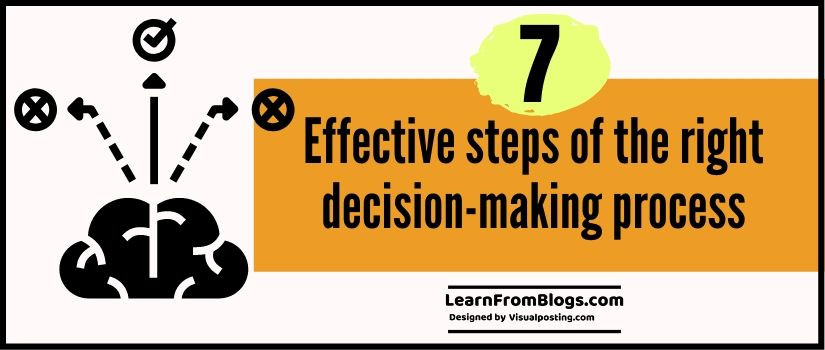
A strategy is a general plan set to achieve a specific objective or goal. Strategies are set either at the individual level or at an organization level.
Decision-making strategy is your plan of action in making choices. These choices let you define the way you need to proceed to do a task.
A list of 7 decision-making strategies is enumerated down below. These strategies will give you thoughts for learning, evaluation, and further action.
- Understand the situation.
Sit with peace at mind and understand the situation in the first place. Check if you really need to pitch into the circumstance and make a decision in that matter. Once you realize that you are the deciding authority, clearly define the nature of the decision you must take. Try to look at the state of affairs from various perspectives. Ensure that the decision you take is unbiased. Try to do justice to all the effected regions pertaining to the given situation.
- Collect information.
Having identified that you need to make a decision regarding someone or something, you need to next accumulate information. Seek more information as per the need of the hour. Pull out the inner energies in you to help yourself with more internal information. Check with your environment for more information and evidence. Understand from others of their similar experiences. Think of different ways in which you can conclude the problem. Listen to a lot of sources. Be judgemental and unprejudiced. Be honest to yourself and trustworthy for others.
- Scan for substitutions.
You scout for information in various ways. During the course, you tend to come up with a varied list of choices to choose from. You end up with several possibilities, action plans, and alternatives. With a positive mindset and an ideation hat, you also pave the way for new alternatives. Do not exaggerate and list down all the realistic options you foresee to take up and arrive at a decision.
- Analyze the pros and cons.
From the vast options available to choose from, work on each of these. List down both the positive effects and the negative impacts that each of these decisions would result in. Check with yourself as to which of these decisions will help you in bridging the gap towards reaching your goal. Evaluate your own philosophies, ethics, and principles in place. Reframe the situation from various viewpoints. Invite opinions of others if need be, but take your own decision.
- Pick one among many.
Once you understand either side of the decision making strategy, it is now time to pick that one perfect one that connects you to your goal. At times, it is ok to choose one or more as per the molding of the situation. You could also combine the strategies to help you fit in with the best. Envision the end results. Understand the inherent risks and obstacles that could probably cross your path. Learn the impact beforehand. Imagine yourself to be the sufferer as if waiting for someone else to make the decision for you. Think about what decision makes you happy. Finally, choose the strategy.
- Walk your talk.
You have to now act on the situation. With enough information and analysis in hand, you should now begin to implement the decision making strategy. Come up with a written plan of action and implement the decision in accordance with the plan listed. Work yourselves on all the necessary resources. Bring in new resources handy to rescue in the hour of need. Apply the decision by taking the concurrence of all the related stakeholders. Execute your strategy.
- Evaluate your strategy.
Narrow down your decision-making strategy. Review your decision and examine yourself often as needed. Check if your thought process and action are in line with your quick-fix solution. Understand if you are really on track towards meeting your desired goal. If, after the initial work ahead, you feel the need for more information, then just gather more details and more insight. Keep exploring alternatives and examine ways to overcome any new and unexpected obstacles blocking your path. List down the initial pitfalls and consequences and keep reviewing on a regular basis.
Adopt decision-making strategies and help yourself overcome obstacles during the path. Avoid the usual pitfalls that block your route to growth. With a well laid out plan in place, you can make decisions better, faster, and in the right possible way. Keep evaluating the success from time to time. Improve the decision-making process. Think twice before you get to the action. Spend sufficient time in doing the related groundwork and for planning how to act. Once all set, just get to work. Keep reviewing and obtaining feedback from participants. Refine your strategy for ultimate betterment.


